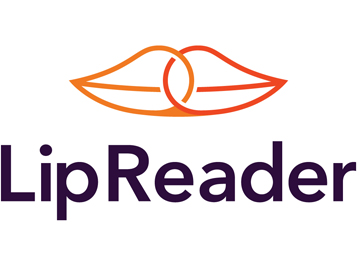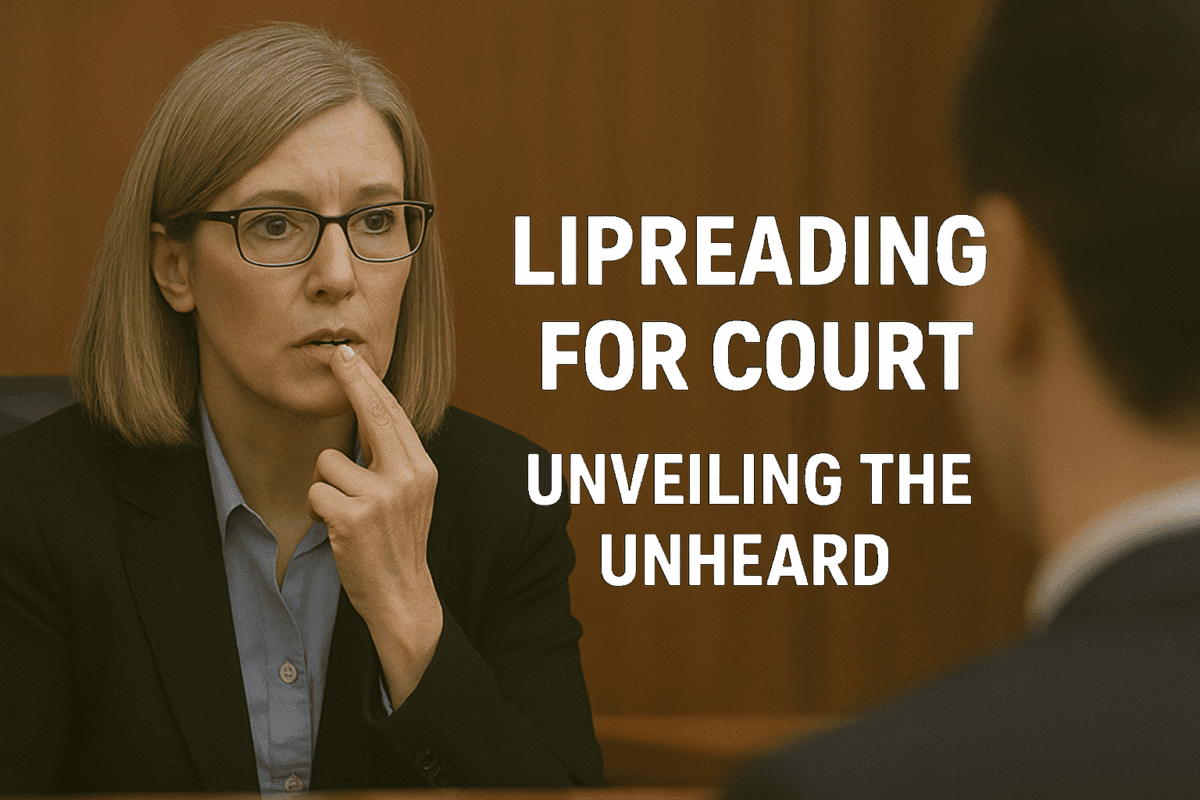When voices go silent, justice should not falter. In court proceedings, video footage—CCTV, surveillance, mobile recordings—often plays a pivotal role in revealing facts. But what happens when audio is missing, distorted, or unusable? That’s where lipreading for court becomes indispensable.
At Lip Reader, we specialize in providing high-quality, admissible lipreading services tailored for legal contexts. In this post, we explore how lipreading supports court cases, its challenges and limitations, and why partnering with a dedicated lipreading service can make the difference between uncertainty and clarity.
Why Lipreading in Court Matters
- Recovering Speech from Silent Evidence
Many legal cases depend on visual evidence—security footage, bodycams, mobile video. But if the audio is poor or absent, crucial utterances remain unheard. Lipreading for court enables the reconstruction of speech from silent footage, giving voice to what was never recorded. - Filling Gaps in Investigation
Critical dialogues before, during, or after confrontations can transform a narrative. Lipreading can reveal intent, admissions, threats, or exculpatory statements that otherwise remain invisible. - Corroborating or Challenging Testimony
Lipreading-derived transcripts can support or challenge witness accounts or statements. They act as an independent, visual check on what was said—or what was claimed to have been said. - Enhancing Judicial Fairness
In criminal or civil cases, equitable access to evidence is crucial. Lipreading allows parties to present evidence derived from visual speech, even when audio fails, ensuring that the visual record isn’t silent in court.
How Lipreading for Court Works: The Process
At Lip Reader, we adapt our standard transcription workflow to meet legal demands. Our process typically includes:
- Initial Assessment & Feasibility
We evaluate the video for lip readability: resolution, lighting, angle, facial visibility, shadows, motion blur, occlusions, etc. If speech is unlikely to be reliably reconstructed, we advise accordingly. - Glossary & Context Gathering
Clients provide context: names, acronyms, accents, jargon, case background. These inputs help disambiguate visually similar lip shapes (homophones) and guide transcription decisions. - Transcription & Interpretation
Expert lipreaders carefully transcribe what is visually decipherable. Where confident, we assert a word; where ambiguity exists, we flag alternatives or indicate uncertainty. - Legal-Grade Reporting
We deliver reports in formats suitable for legal use: time-stamped transcripts, frame references, confidence notes, and commentary on limitations or uncertainties. - Expert Evidence / Testimony (Optional)
If required, our lipreading experts may provide sworn testimony or deposition support, explaining methodology, confidence levels, and interpretative decisions.
Challenges & Limitations in Court Lipreading
Lipreading is a powerful tool—but in the courtroom, stakes are high and limitations must be managed carefully.
- Visual Ambiguity & Homophones
Many phonemes look identical on the lips (e.g. “p,” “b,” “m”). Without context, even expert lipreaders may not distinguish between them reliably. - Obstructed View
Facial coverings, movement, head turns, hands, beards, or poor lighting can block lip visibility. - Quality Constraints
Low resolution, compression artifacts, blur or frame skipping can degrade what can be read. - Accents, Dialects & Speed
Regional pronunciation or fast speech may complicate interpretation. - Admissibility & Expert Scrutiny
Courts may treat lipreading as supportive rather than conclusive evidence. The judge may evaluate the expert’s qualifications, methodology, error margins, and disclosure of uncertainties. In UK law, lipreading is sometimes introduced as supplementary evidence, not as the sole linchpin. - No Standard Certification
Unlike some forensic disciplines, there’s no universally accepted certification for forensic lipreading: credibility often hinges on demonstrable skill, methodology, and transparency.
Best Practices: Maximizing Reliability in Court Lipreading
To produce the strongest possible lipreading evidence:
- Provide the highest-quality video available (no further compression or down sampling).
- Focus on segments of interest and ensure clear views of speakers’ faces.
- Furnish contextual metadata: identities, likely lexicon, case background, language/dialect.
- Request the lipreader to include confidence levels or uncertainty flags in their report.
- Request that the expert explain methodology and limitations transparently.
- Use lipreading as part of a holistic evidence package, not as a standalone proof.
Why Choose Lip Reader for Your Court Lipreading
- Specialized Legal Focus
We are experienced in working within legal frameworks and understanding the scrutiny evidence undergoes. - Transparent Methodology
Our reports clearly show where certainty is strong and where ambiguity remains. - Confidential & Secure
We handle sensitive legal footage under strict confidentiality. - Global Coverage
Our expertise is available for cases across jurisdictions. - Optional Expert Support
Our lipreaders can assist as expert witnesses or consultants, if needed.
Case Precedents & Forensic Speechreading
Lipreading used in legal settings is sometimes described as part of forensic speechreading. Historically, courts have admitted lipreading evidence—R v Luttrell is one example where lipreader testimony from surveillance was admitted, though courts often caution about reliability.
Because lipreading is not infallible, it is frequently used to support other evidence rather than being the sole basis for verdicts.
Conclusion
In court, silence should not be an impediment to truth. Lipreading for court gives voice to the unseen, turning silent footage into valuable testimony. By combining expert skill, methodological transparency, and legal sensitivity, LipReader helps ensure that visual evidence speaks clearly—even when audio fails.
If you are involved in a case requiring lipreading support—or simply want to explore how lipreading can strengthen your evidence—Lip Reader is here to assist. Contact us to find out how we can help make the unseen heard.

